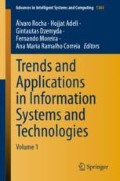Abstract
Today, the Internet of Things (IoT) has been introduced in our lives, giving a variety of solutions and applications. The critical requirements for devices connected to the IoT are long battery life, long coverage, and low deployment cost. Some applications require the transmission of data over long distances, thus Low Power Wide Area Networks (LPWAN) have emerged, with LoRa being one of the most popular players of the market. In order, to improve energy consumption and connectivity problems, machine learning can be used in LoRa networks. In this paper, we intend to improve the energy consumption of end nodes by using machine learning models. For this reason, we present a comparison of classification algorithms, specifically, the k-NN, the Naïve Bayes, and Support Vector Machines (SVM), for the Spreading Factor (SF) assignment in LoRa networks. The simulation results indicate that, both energy efficiency and reliability in IoT communications could be significantly improved using the proposed learning approach. These promising results, which are achieved using lightweight learning, make our solution favorable in many low-cost low-power IoT applications.
Access this chapter
Tax calculation will be finalised at checkout
Purchases are for personal use only
References
Buurman, B., Kamruzzaman, J., Karmakar, G., Islam, S.: Low-power wide-area networks: design goals, architecture, suitability to use cases and research challenges. IEEE Access 8, 17179–17220 (2020)
Bouras, C., Gkamas, A., Salgado, S.A.K., Kokkinos, V.: Comparison of LoRa simulation environments. In: Lecture Notes in Networks and Systems, pp. 374–385. Springer (2019)
Suresh, V.M., Sidhu, R., Karkare, P., Patil, A., Lei, Z., Basu, A.: Powering the IoT through embedded machine learning and LoRa. In: 2018 IEEE 4th World Forum on Internet of Things (WF-IoT), Singapore, pp. 349–354 (2018)
Zhou, L., Wang, L., Ge, X., Shi, Q.: A clustering-based KNN improved algorithm CLKNN for text classification. In: 2010 2nd International Asia Conference on Informatics in Control, Automation and Robotics (CAR 2010), Wuhan, pp. 212–215 (2010)
Magno, M., Pritz, M., Mayer, P., Benini, L.: DeepEmote: towards multi-layer neural networks in a low power wearable multi-sensors bracelet. In: 7th IEEE International Workshop on Advances in Sensors and Interfaces (IWASI), Vieste, pp. 32–37 (2017)
Mahdavinejad, M.S., Rezvan, M., Barekatain, M., Adibi, P., Barnaghi, P., Sheth, A.P.: Machine learning for internet of things data analysis: a survey. Digit. Commun. Netw. 4(3), 161–175 (2018)
Chang, Y., Huang, T., Huang, N.: A machine learning based smart irrigation system with LoRa P2P networks. In: 20th Asia-Pacific Network Operations and Management Symposium (APNOMS), Matsue, pp. 1–4 (2019)
Carrino, F., Janka, A., Abou Khaled, O., Mugellini, E.: LoRaLoc: machine learning-based fingerprinting for outdoor geolocation using LoRa. In: 6th Swiss Conference on Data Science (SDS), Bern, Switzerland, pp. 82–86 (2019)
Bor, M., Roedig, U.: LoRa transmission parameter selection. In: 13th International Conference on Distributed Computing in Sensor Systems (DCOSS), Ottawa, ON, pp. 27–34 (2017)
https://www.thethingsnetwork.org/docs/lorawan/adaptive-data-rate.html
Bor, M.C., Roedig, U., Voigt, T., Alonso, J.M.: Do LoRa low-power wide-area networks scale. In: Proceedings of the 19th ACM International Conference on Modeling, Analysis and Simulation of Wireless and Mobile Systems - MSWiM 2016 (2016)
Bouras, C., Kokkinos, V., Papachristos, N.: Performance evaluation of LoraWan physical layer integration on IoT devices. In: Global Information Infrastructure and Networking Symposium (GIIS), Thessaloniki, Greece (2018)
Huh, H., Kim, J.Y.: LoRa-based mesh network for IoT applications. In: IEEE 5th World Forum on Internet of Things (WF-IoT), Limerick, Ireland, pp. 524–527 (2019)
Ruggeri, M., Graziosi, F., Santucci, F.: Modeling of packet cellular networks with log-normal shadowing. In: Proceedings of PIMRC 1996 - 7th International Symposium on Personal, Indoor, and Mobile Communications, Taipei, Taiwan, pp. 296–300 (1996)
Croce, D., Gucciardo, M., Mangione, S., Santaromita, G., Tinnirello, I.: LoRa technology demystified: from link behavior to cell-level performance. IEEE Trans. Wirel. Commun. 19(2), 822–834 (2020)
https://www.semtech.com/products/wireless-rf/lora-transceivers/sx1272
Daramouskas, I., Kapoulas, V., Paraskevas, M.: Using neural networks for RSSI location estimation in LoRa networks. In: 10th International Conference on Information, Intelligence, Systems and Applications (IISA), PATRAS, Greece, pp. 1–7 (2019)
Petajajarvi, J., Mikhaylov, K., Roivainen, A., Hanninen, T., Pettissalo, M.: On the coverage of LPWANs: range evaluation and channel attenuation model for LoRa technology. In: 14th International Conference on ITS Telecommunications (ITST), Copenhagen, pp. 55–59 (2015)
Acknowledgment
This research has been co-financed by the European Union and Greek national funds through the Operational Program Competitiveness, Entrepreneurship and Innovation, under the call RESEARCH - CREATE - INNOVATE (project code: T1EDK-01520).
Author information
Authors and Affiliations
Corresponding author
Editor information
Editors and Affiliations
Rights and permissions
Copyright information
© 2021 The Author(s), under exclusive license to Springer Nature Switzerland AG
About this paper
Cite this paper
Bouras, C., Gkamas, A., Katsampiris Salgado, S.A., Papachristos, N. (2021). Spreading Factor Analysis for LoRa Networks: A Supervised Learning Approach. In: Rocha, Á., Adeli, H., Dzemyda, G., Moreira, F., Ramalho Correia, A.M. (eds) Trends and Applications in Information Systems and Technologies. WorldCIST 2021. Advances in Intelligent Systems and Computing, vol 1365. Springer, Cham. https://doi.org/10.1007/978-3-030-72657-7_33
Download citation
DOI: https://doi.org/10.1007/978-3-030-72657-7_33
Published:
Publisher Name: Springer, Cham
Print ISBN: 978-3-030-72656-0
Online ISBN: 978-3-030-72657-7
eBook Packages: Intelligent Technologies and RoboticsIntelligent Technologies and Robotics (R0)

